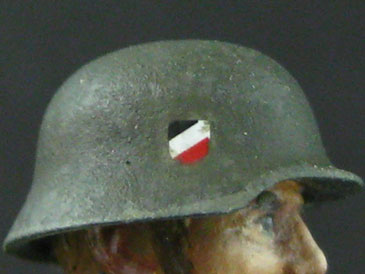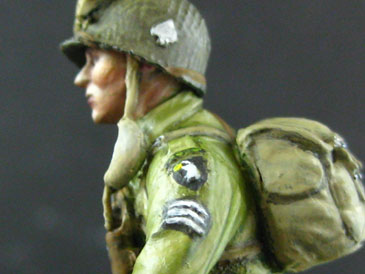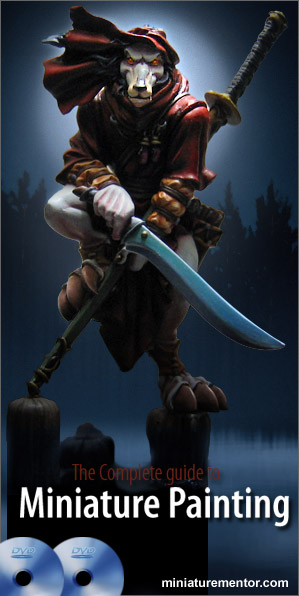Markings and Decals
 |
Markings and DecalsUsually when you have established what type of figure that you want to paint, you will discover that certain details like special badges or markings are needed to add more realism to the miniature figure. Certain times you can easily obtain a special water decal or dry transfer to add to the figure. Sometimes you may want make your own markings by painting or create your own custom decal. |
Rub On Decal and Water transfer Inkjet Decals
Currently there are two types of decals- dry transfer or rub on deals and water transfer decals. There was a time when water transfer decals were provided when you purchase a miniature figure. However today it has become a product on its own. Rub on decals and water transfer decals have been around a very long while. Tamiya still produces water slide decals and Archer produces rub on decals or dry decals.
Today, you can even design and print your own decals for your miniature.
All you need to get is a special decal paper, design software and printer. The custom DIY inkjet decal paper is now affordable and you need an aerosol fixative for digital prints to lock the printer ink down onto the paper, Krylon manufactures lots of these kinds of products. If you cannot find decals suited for your miniatures this is good way to make your own custom decals.
Photo Etch
Another interesting feature is the photo etch decals. This kind of tranfers are made of brass and much thicker than the abovementioned decals. Eduard comes to mind when it comes to these kind of photo etch products for miniature figures.
To apply photo etch products, at times you need to remove the surface of your miniature model so that it does not appear to be too thick.
Handpainted markingsLike most miniature modellers, I have tried painting markings freehand. I believe the best way to paint by hand is to actually outline the design with a pencil or use putty to shape the design first. That will iron out the guidelines and really help with the accuracy of the final pattern-especially if the pattern is in 1/35 scale and smaller! All you need is to hold your breath and a steady hand to finish the job. |
 |
When painting markings, modellers like to use acrylics diluted with water in the ratio of 1:2. If it is too diluted, the colour becomes weak and difficult to achieve a sharp and crispy look. I�m not sure about other modeller's habits, but I use a liner brush for all hand painted markings because of its very fine tip.





